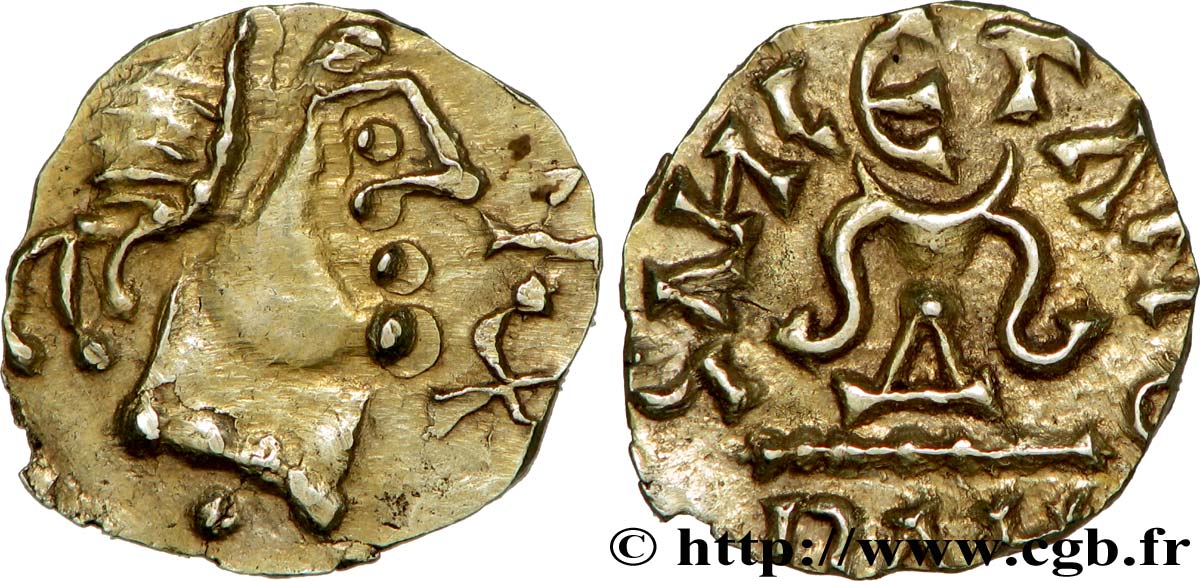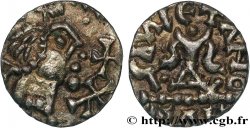bmv_395172 - MEROVINGIAN COINAGE - BANASSAC (BANNACIACO) - Lozere Triens à la croisette et au chrisme
Not available.
Item sold on our e-shop (2020)
Price : 2 500.00 €
Item sold on our e-shop (2020)
Price : 2 500.00 €
Type : Triens à la croisette et au chrisme
Date: c. 620-640
Mint name / Town : Banassac (48)
Metal : gold
Diameter : 13 mm
Orientation dies : 9 h.
Weight : 1,24 g.
Rarity : R2
Officine: OR7
Coments on the condition:
Bel exemplaire, sur un flan un peu court mais avec une frappe vigoureuse, un peu trèflée au droit mais nette au revers. Or fortement allié de couleur un peu pâle
Catalogue references :
Obverse
Obverse legend : ANÉPIGRAPHE.
Obverse description : Tête barbare diadémée, à droite ; diadème et cou perlés ; une croisette et une sorte de chrisme devant le visage, un globule entre parenthèses sous le cou.
Reverse
Reverse legend : GAVALETANO // BAH.
Reverse description : Calice à deux anses, posé sur une ligne d’exergue perlée.
Commentary
Les triens de cette série sont relativement abondants ce qui a permis d'en réaliser une étude précise, avec des différenciations parfois subjectives. Cet exemplaire avec la croisette et le chrisme correspond à la variante 24 du Moneta qui en recense onze exemplaires.








 Report a mistake
Report a mistake Print the page
Print the page Share my selection
Share my selection Ask a question
Ask a question Consign / sell
Consign / sell
 Full data
Full data







